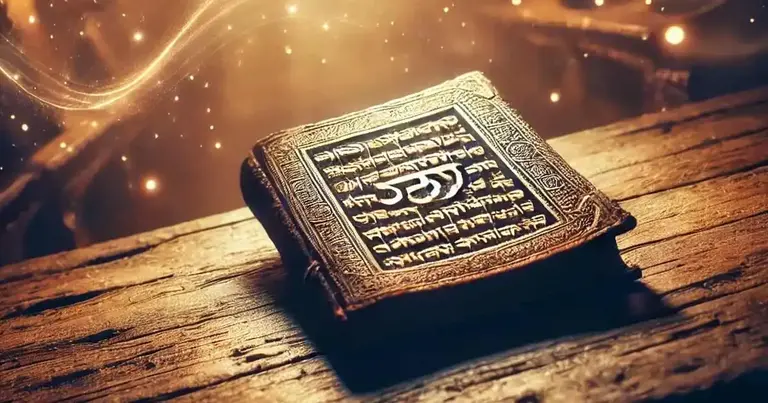What the Vedas Really Teach (And Why They’re Not Just About Rituals)

You’ve probably heard people say the Vedas are full of mantras and rituals—complex chants meant for priests and ceremonies. But if that were all they were, why would generations of thinkers, scientists, and philosophers dedicate their lives to understanding them?
After years of studying and decoding the Vedas, I can confidently say this: they aren’t just books of rituals. They are blueprints for individual and collective transformation—if understood correctly.
Many people want to read the Vedas but are overwhelmed by the complexity of Sanskrit or pure Hindi texts. Others are discouraged by how they’ve been boxed into religious rituals that seem outdated or irrelevant to daily life. That’s where this blog (and my YouTube channel) comes in—to simplify, modernize, and reveal the practical wisdom hidden inside each verse.
Vedas: Not Just Chanting, but Conscious Evolution
The word Veda literally means knowledge. But knowledge of what? Not just knowledge for survival or ritual, but for living consciously and meaningfully. The first of the four Vedas is the Rigveda, and its name comes from two Sanskrit words: “Rich” (ṛc) and “Veda”. Many interpret ṛc as “praise,” leading people to believe that the Rigveda is just about glorifying gods. But this is a shallow interpretation.
Think about it. As kids, we were told: Study hard, get a job, earn respect. That advice wasn’t about textbooks—it was about shaping our character. In the same way, the Vedas were respected not because they glorified deities, but because they glorified truth, wisdom, discipline, and strength of character. Those who lived by these principles were worthy of honor.
Ancient scriptures like the Ramayana, Mahabharata, and various Puranas repeatedly say: “The one who studies the Vedas will have all their desires fulfilled.” But later, in the Bhagavad Gita, Krishna clearly says: “Let go of desires. Work for the greater good.”
Is this a contradiction? Not at all.
These scriptures aren’t lying to us—they are guiding us through stages of transformation. In the beginning, we’re all driven by wants. But the more we understand the Vedas, the more our desires evolve—from wanting money to seeking meaning. From craving power to becoming a source of strength for others.
Sanskrit: A Language of Layers
One reason the Vedas are hard to interpret is because of Sanskrit’s multi-layered nature. Let’s take the basic Sanskrit question: “Bhavatah nāma kim?”—which means “What is your name?”
But if we look deeper, “Bhava” means “to become” or “to evolve.” So the question could also be asking: “What have you become?”
This isn’t a linguistic trick—it’s a reflection of how conscious language was used in the Vedas. Every word carried multiple meanings based on context, intention, and the state of the listener’s awareness. Understanding this subtlety is key to understanding mantras.
The Real Meaning of Mantra (And Why Chanting Alone Isn’t Enough)
The word mantra is made of two roots: man (mind) and tra (tool or instrument). So a mantra is literally a tool for the mind.
But unlike how many see it today, a mantra is not a magical phrase to chant mindlessly. It’s not about the sound alone—it’s about what that sound awakens in you.
A mantra is like a code—a deeply encrypted message that only reveals itself when you have the right key: wisdom, focus, and intention. That’s why those who say “don’t question the mantra, just chant” are missing the point. Without decoding, a mantra is just sound. But with understanding, it becomes a roadmap to higher awareness.
Let’s see how this applies to the first mantra of the Rigveda.
Rigveda’s First Verse: Fire, Not Just Flame
Here’s the first mantra from Rigveda 1.1.1:
अग्निमीळे पुरोहितं यज्ञस्य देवमृत्विजम् । होतारं रत्नधातमम् ॥
agnim īḻe purohitaṃ yajñasya devam ṛtvijam | hotāraṃ ratnadhātamam ||
Most translations read:
“I praise Agni, the priest of the sacrifice, the divine minister, the giver of wealth.”
But this surface-level meaning doesn’t do justice to what’s really being said.
Agni, commonly understood as fire, is far more than a physical flame. All religions teach detachment, but the Vedas offer a practical path through symbolic metaphors. You can’t detach from something you’re stuck in—so the Vedas guide you using what you already experience.
Agni is a symbol of conscious transformation. Fire doesn’t discriminate. It purifies everything. Likewise, those who carry the essence of Agni are people who uplift, purify, and bring light—not just to themselves, but to everyone around them.
In the mantra, Agni is called the purohita (minder of the town), ṛtvij (knower of the right time), and ratnadhātama (bestower of inner wealth). None of these are literal roles. They refer to qualities of a leader, a guide, a giver.
But are such people respected today? Sadly, no. We often praise wealth, power, or fame—even if they’re gained through unethical means. But in ancient Vedic culture, character mattered more than position.
That’s what this mantra is trying to rekindle.
What It Means to Be a Giver (Deva)
Agni is described as one who gives ratna—jewels. But this doesn’t mean gold or gems. It refers to those who have precious qualities—and who distribute them with care.
Let’s break down three types of “giving”:
- Material donation: You have more than you need, and you give the extra. Noble, but still basic.
- Selfless Giving: You only have what you need but you still share the half. That’s sacrifice.
- Transformational Giving: You continuously make yourself more capable to ensure that you can take care of the majority. That’s when you become a Dev—not a god in heaven, but a giver on Earth.
This is the type of human the Vedas want us to become. That is the true Agni—not one who burns things, but one who ignites lives.
Why the Vedas Were Coded in Riddles
If the Vedas are so powerful, why were they written in a way most people can’t understand?
Because real power in the wrong hands becomes dangerous. That’s why our sages hid deep truths inside metaphors, poetry, and symbolism. This kept the knowledge protected—until the right mind with the right intent came along.
Today, anyone can access the mantras. But without context, without decoding, we fall back into superstition or misuse.
The real Vedas are not religious texts—they are psychological, social, and spiritual manuals for human beings to evolve consciously.
What Happens When You Truly Understand the Vedas?
You stop chasing what doesn’t matter.
You stop fearing life’s problems.
You stop asking, “What can I get?” and start asking, “What can I give?”
You become a flame, like Agni—not one that burns, but one that lights up everything around it.
And that’s just the first mantra.
If this resonates with you, stay with me. In the next blog, we’ll dive into the second mantra of the Rigveda and continue decoding this ancient wisdom—one verse at a time.

